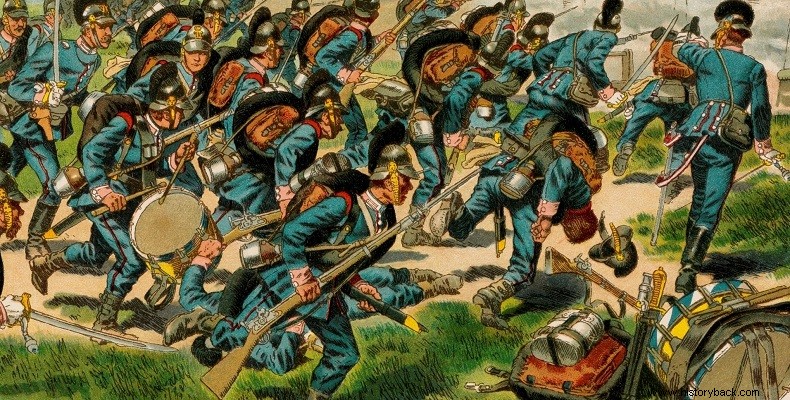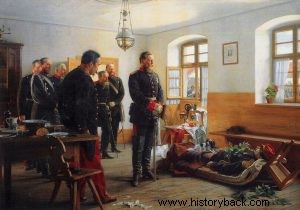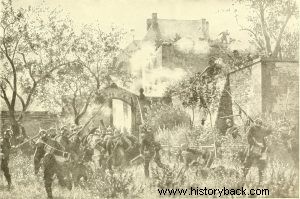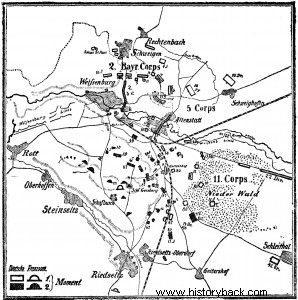
The chancellor of Prussia, the famous Otto von Bismarck, managed to put so much diplomatic pressure on Napoleon III's France that the French emperor had no choice but to declare war.
Many German states allied with the Prussians. In June 1870, Napoleon III ordered his forces to invade Saarbrucken. The Army of the Rhine under Field Marshal McMahon would reinforce General Douay's 2nd Infantry Division (IP) already at Wiesenburg. When they got there and McMahon's forces would join the division and invade deep into Germany . But the 3rd German Army under Crown Prince Friedrich Wilhelm was also moving towards Wiesenburg.
Misunderstanding, backbiting, wrong information
It is worth noting that neither side was aware of the other's movements. However, due to a misunderstanding, the French forces at Wiesenburg retreated. But later the French decided to deploy again in the area... In the midst of these setbacks, in early August, McMahon advanced his forces, while the 2nd MP deployed again in the area of Wiesenburg and Guisberg covered by the 1st MP, left and a cavalry brigade, right.
Because of Ducrou's better knowledge of the area, the French headquarters assigned him to oversee the development of not only his own 1st Army, but also the 2nd Army. The overlapping of the responsibilities of the two marshals was a serious error of the French administration.
Ducrou advised Douai to change the line-up of his division by reinforcing his forces covering the heights in the Lotte Valley, leaving only one battalion at Wiesenburg. The French 2nd MP had two infantry brigades with a total of eight battalions and two artillery brigades (12 guns) and one machine gun artillery (six elements). Reinforced by a brigade of light cavalry (six islands).
In the meantime Ducrou informed Douay that "the enemy had no strong forces in the area and did not seem disposed to attack"... He told McMahon that "it all seemed to him a big bluff".
The "invisible" Germans are coming
On the other side of the hill the German 3rd Army extended about 60,000 men from Prussia, Bavaria, Württemberg and Baden (Wade), organized into three SS . The Germans approached without being noticed. The French were having their breakfast and carelessly cleaning their weapons. They only realized what was happening when they heard the German guns firing at around 08.15 on the morning of August 4, 1870.
The 3rd Army had the 5th, 11th and 2nd Bavarian SS. The 11th SS formed the extreme left of the 3rd Army and moved to outflank the French position while the 4th Bavarian Army was the first to advance against the French supported by artillery.
First contact occurred on the heights of Schweigen, north of Lotte. There the 2/74th Battalion thanks to their excellent Chassepot rifles managed to keep the Bavarians at bay. To the east the 1st Regiment of Algerian Mountaineers (known as 'the Turks') also held the Germans at the Lotte Pass, to the east.
The two battalions of the 50th Infantry also kept their opponents at bay. At the same time Douay sent messengers to notify McMahon. As the German pressure escalated, Douai, around 10:00, realized that he was not facing an aggressive reconnaissance of the enemy but a large-scale attack. An hour later, however, he was killed by an ammunition explosion.
At the same time the 144 guns of the German 3rd Army began to excavate the French positions. Within Wiesenburg and the adjacent Gaisburg the battle turned fierce in melee with lances. Finally the French, although they fought heroically, retreated from the city leaving behind 2,300 men (1,600 dead and wounded, 700 prisoners).
The Germans had 1,550 dead and wounded. The battle demonstrated for the first time the superiority of the French Chassepot rifle over the Prussian Dreyse, but also the superiority, qualitative and quantitative, of the German artillery which used breech-loading Krupp guns against the front-loading French.
The victory, albeit a small one, proved to be particularly useful for the Germans. Immediately after, the German Army moved against McMahon.

Prussian Crown Prince Frederick William honors the dead French General Douai.

Prussian soldiers charge against the French garrisoned at Gaisburg.

Map of the Battle of Wiesenburg.
